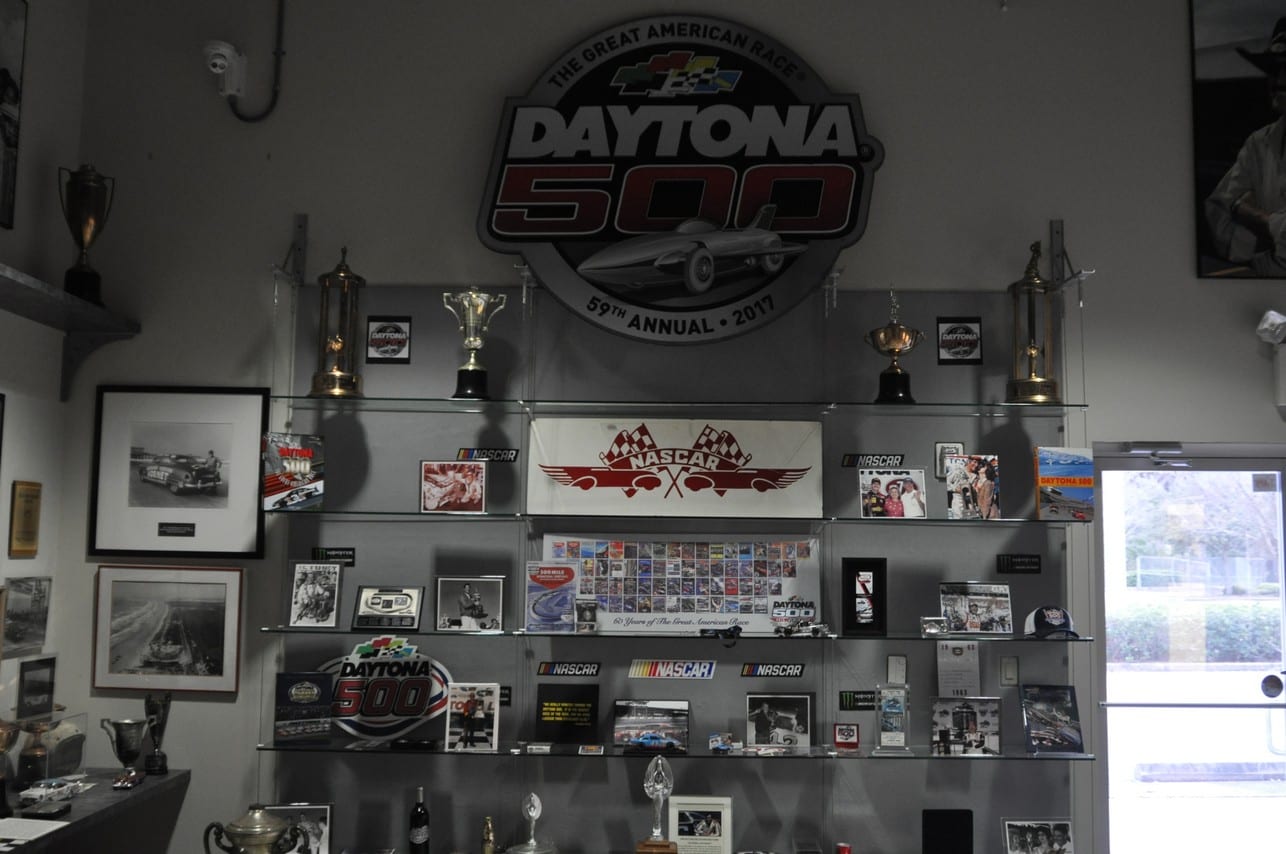ISC, International Speedway Corporation, owns or operates thirteen of our nation’s premier race tracks. Daytona International Speedway is one of those tracks. In order to preserve the long history of racing in Daytona, ISC created the ISC Archives and Research Center, which located about three miles from the track.
The main purpose of the facility is to preserve the photography and memorabilia related to the track. But because there is so much of it, this Archives Center is also used as a research and reference library for various Daytona-related publications, photography, film, and other historic items.

Racing in Daytona goes all the way back to 1903 where the hard-packed beach was used for top-speed runs. This lasted until 1935, when the top speed runs were moved to the Bonneville Salt Flats. The achieved sub-300MPH speeds were just too fast for this venue.
The people of Daytona were not ready to give up on racing just yet. In 1936 the first stock car race took place in Daytona. It was four-mile race, with two miles on it taking place on the beach and the returning two miles were on the roadway. That lasted until 1961. Surprisingly, the whole time, motorcycle racing was even more popular than car racing.
One of the people involved in this racing was a gentleman named Bill France, who moved into the area in 1934. An auto repairman and racer decided to manage the racing in Daytona, which until this point as poorly organized and at a loss to the city and ticketholders. This would eventually lead to the creation of NASCAR in 1948.
In 1959 the Daytona Motor Speedway was constructed.

The ISC Archives and Research Center has over five million images in its climate-controlled vault. The vault keeps all of this at 70F and at 40% humidity. Some of the most interesting early photography was taken by Richard Leseme, who attended every Daytona race from 1903 until 1958.
There are several cars there, too. Exact replicas of Mario Andretti’s 1967 Daytona 500 winning Pontiac and Marvin Panch’s 1961 Daytona 500 winning Pontiac Bonneville. The big top-speed racer is a replica of Sir Malcom Campbell’s Bluebell. There is timing equipment and garage benches, trophies, and a ton of posters.

Perhaps the most interesting this part of this archive is Bill France Senior’s office. The interesting story behind it is that when Mr. France was suffering from Alzheimer’s disease, his son created this office for him so that he would feel like he was working.
The collection is a must-see for serious NASCAR fans but any auto enthusiast will find something interesting. While it is not open to the public, it is part of the VIP Tour Experience at the World Center of Racing.















































Leave a Reply